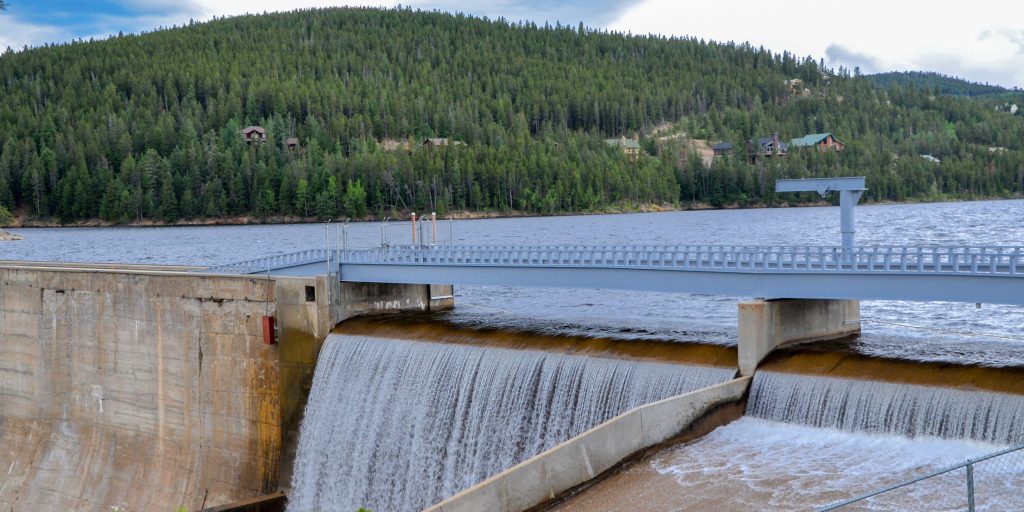3 tips for getting a bigger piece of the IIJA pie
The $1.2 trillion Infrastructure Investment and Jobs Act (IIJA), also known as the bipartisan infrastructure law, will bring profound improvements to America’s roads and bridges, railways, water systems, improved emergency management and mitigation, and broadband access. IIJA’s competitive grants, increased funding levels, and emphasis on local investment, are especially exciting components of the law as they level the playing field between large and small cities and counties. In fact, some funding is earmarked for underserved communities, including rural and tribal areas.
There is a tremendous amount of information available—so much that many American Public Works Association members report feeling overwhelmed and don’t know where to begin. Proactivity is key, and there are a few things municipalities and counties can do to get up to speed and strengthen their applications:
- Find a trusted resource. To help municipalities and counties take full advantage of IIJA opportunities, the American Public Works Association created an IIJA Resource Page, which not only lists programs and upcoming deadlines, but also provides links to guidebooks, fact sheets and other information from individual agencies and departments. This page is updated frequently as more information on transportation, water resiliency and emergency management opportunities become available.Another excellent resource is the White House Building a Better America Guidebook, which breaks down the IIJA law and priority areas, provides information about grants and how to apply for them and includes a technical assistance guide to help communities feeling inundated by so much information.
Because information is coming out rapidly, cities and counties should designate a key person to check resources at least weekly to stay on top of deadlines and details. Getting up to speed on each program’s requirements and understanding about how they apply to a given community greatly improves one’s chances of creating a successful application.
- Cultivate relationships with neighboring and regional municipalities, counties and state agencies. The adage “It’s not what you know, it’s who you know” absolutely applies. Building strong relationships—including with specific individuals in local, state and federal organizations who are experts on the process and requirements—provides access to a wealth of knowledge that can enhance your application.Solid relationships also help you get in on regional projects—a mutually beneficial endeavor that allows all parties to amplify the number of people served and goals achieved. Networking helps you unearth common goals and generate support for ideas and proposals.
- Know what you want to achieve. Whether you’re building a safer transportation corridor, bringing a water system up to standard, establishing an emergency management and response system or introducing high-speed internet to a disadvantaged area, being able to clearly demonstrate the expected outcome—including anticipated benefits—goes a long way. Successful applicants must articulate how they will fulfill what the grant intends to accomplish, such as what’s already in place, what stage the project is in and local partners involved. Specifying how much state or federal funding is needed—and how you will leverage the dollars received—is also imperative.Proper asset management is especially helpful—although the federal government has not broadly required it, the U.S. Department of Transportation, for example, is a leader in asset management, requiring state departments of transportation to submit asset management plans. Knowing what infrastructure assets a community has, the expected life cycles of these assets, and the cost of maintenance and replacement can assist in securing funding.
Cities and counties able to show who their proposed project serves and how citizens benefit likewise have an advantage, especially when underserved communities are impacted. What is the history, and how does your project make a difference? What data can you share to bolster your case?
It’s never too late
Although some opportunities have already closed—and the 2022 deadline for Strengthening Mobility and Revolutionizing Transportation (SMART) Grants is rapidly approaching on Nov. 18, the good news is IIJA is a five-year law and programs will re-open annually. Even a missed deadline is an opportunity to dig into the application process and learn, and thus prepare a future application.
For example, the new Safe Streets and Roads for All (SS4A) program published the 2022 winners of projects awarded funding, providing cities and counties with the ability to reach out to winners in their area or on a similar type of project to find out what they did that led to their success.
Cities and counties feeling overwhelmed by the amount of information and requirements of the infrastructure law aren’t alone—there are many excellent resources available and people and organizations who can help. Turning to trusted resources and developing relationships can make the process far less intimidating—while those who best present a clear picture of what their projects seek to accomplish, demonstrate their abilities to make it happen on time and within budget and showcase the benefits to citizens will secure the funding they need to safeguard their communities.
Andrea Eales is director of government and public affairs for the American Public Works Association, the only organization providing a voice for all public workers who plan, design, build, maintain and operate the country’s vast infrastructure networks. Cities and counties can find a variety of resources at https://resourcecenter.apwa.net/.


















